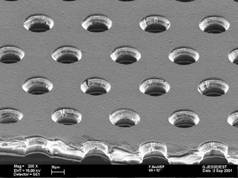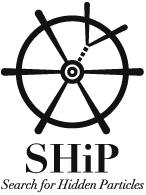|
Bari activities |
|
Coordinator: Salvatore My |
|
CMS experiment
The Compact Muon Solenoid (CMS) is a general-purpose detector at the CERN Large Hadron Collider (LHC). It has a broad physics programme ranging from studying the Standard Model (including the Higgs boson) to searching for extra dimensions and particles that could make up dark matter. The CMS detector is built around a huge solenoid magnet. This takes the form of a cylindrical coil of superconducting cable that generates a field of 4 tesla, about 100,000 times the magnetic field of the Earth. A steel “yoke” that forms the bulk of the detector’s 14,000-tonne weight confines the field. The CMS experiment is one of the largest international scientific collaborations in history, involving 4300 particle physicists, engineers, technicians, students and support staff from 182 institutes in 42 countries (February 2014).
|
|
TOTEM experiment TOTEM experiment is designed to take precise measurements of protons as they emerge from LHC collisions at small angles. This region is known as the ‘forward’ direction and is inaccessible by other LHC experiments. |
|
RD51 experiment
The proposed R&D collaboration, RD51, aims at facilitating the development of advanced gas-avalanche detector technologies and associated electronic-readout systems, for applications in basic and applied research. The main objective of the R&D programme is to advance technological development and application of Micropattern Gas Detectors. |
|
SHIP experiment
The SHiP Experiment is a new general-purpose fixed target facility at the SPS to search for hidden particles as predicted by a very large number of recently elaborated models of Hidden Sectors, which are capable of accommodating dark matter, neutrino oscillations, and the origin of the full baryon asymmetry in the Universe. Specifically, the experiment is aimed at searching for very weakly interacting long lived particles including Heavy Neutral Leptons – right-handed partners of the active neutrinos; light supersymmetric particles – sgoldstinos, etc; scalar, axion and vector portals to the hidden sector. The high intensity of the SPS and in particular the large production of charm mesons with the 400 GeV beam allow accessing a wide variety of light long-lived exotic particles of such models and of SUSY. Moreover, the facility is ideally suited to study the interactions of tau neutrinos. |
|
LHCb experiment
The LHCb (standing for “Large Hadron Collider beauty”) experiment collecting data at the Large Hadron Collider accelerator at CERN, is a specialized b-physics measurements , that is measuring the parameters of CP violation in the interactions of b-hadrons (heavy particles containing a bottom quark). Such studies can help to explain the Matter-Antimatter asymmetry of the Universe. The detector is also able to perform measurements of production cross sections and electroweak physics in the forward region. Approximately 840 people from 60 scientific institutes, representing 16 countries, form the collaboration who built and operate the detector. |
|
Kloe
 |








